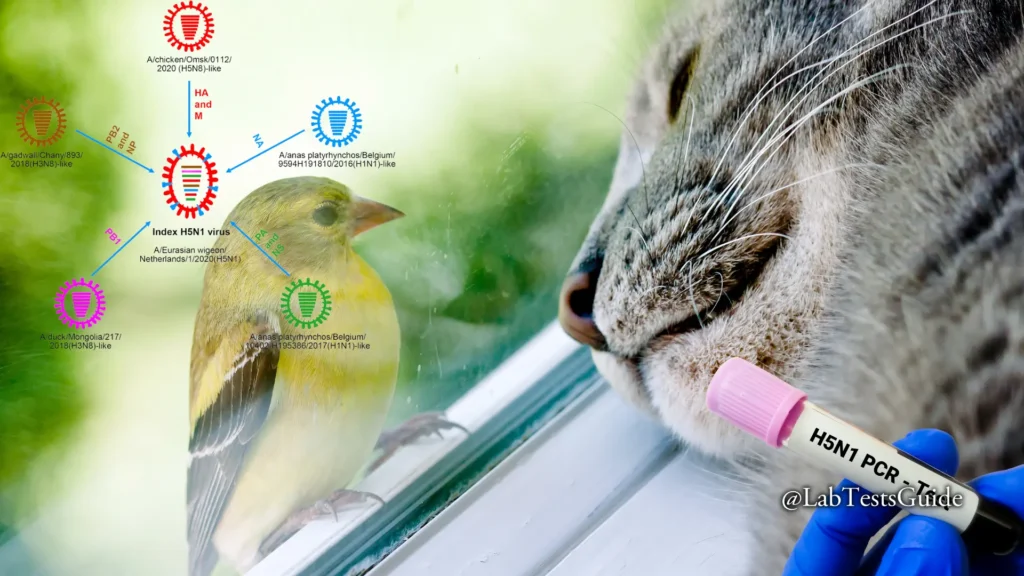The United States is currently grappling with a significant bird flu outbreak that has not only affected avian populations but has also spread alarmingly to various mammalian species, highlighting the virus’s ability to jump across different animal groups. As of the latest reports, the outbreak has reached at least 31 states and has impacted a diverse range of mammals, including cows, foxes, mice, striped skunks, mountain lions, harbor seals, alpacas, and notably, domestic cats. Read More

Spread and Impact on Mammals
The spread of the bird flu virus among mammals has been swift and concerning. Reports confirm infections in cows across 12 states, pointing to a new challenge in agricultural and veterinary sectors. Additionally, wildlife such as foxes, mice, skunks, mountain lions, and harbor seals have been found infected, underscoring the virus’s adaptability and transmission potential among various wildlife populations.
Of particular concern are domestic cats, with at least 21 cases reported across nine states since March 1. The U.S. Department of Agriculture has identified infected cats ranging from feral and barn cats to household pets. Although rare, the transmission of the H5N1 virus from cats to humans is possible through saliva, feces, or other bodily fluids. Fortunately, all reported human cases, which occurred on farms, have resulted in full recoveries, with efforts underway to contain further spread.
Transmission Dynamics and Veterinary Insights
The primary mode of transmission remains interaction with infected birds. Recent findings at a Texas dairy farm suggest that dairy cows may have contracted the virus from contaminated water and food sources, likely contaminated by migrating wild birds. This event marks a concerning milestone as it represents one of the first known instances of bird flu affecting dairy cows, highlighting the virus’s expanding reach and the vulnerabilities within agricultural settings.
Dr. Elisha Frye from Cornell University, who investigated cases at the affected dairy farm, confirmed the presence of the virus in cows through comprehensive testing of milk samples, manure, and nasal swabs. The discovery of the virus in deceased birds and cats further underscored the interconnectedness of the outbreak across different species within close proximity.
Historical Context and Global Precedents
While sporadic mammalian outbreaks of bird flu have been recorded in the past, including instances involving wild animals and pets like dogs and cats, the current scale and breadth of the U.S. outbreak are unprecedented. Past outbreaks in domestic animals, such as the notable incidents in Thailand (2004) and Germany/North America (2006), serve as reminders of the virus’s potential to affect diverse animal populations globally.
Signs Your Pet May Be Sick: Monitoring for Bird Flu Symptoms
While the likelihood of your cat contracting bird flu is low, it’s crucial to stay vigilant, especially if your pet spends time outdoors or near potentially infected birds. Here are signs to watch for if you suspect exposure to sick birds:
- Fever or Feeling Feverish/Chills: Monitor for any signs of elevated body temperature.
- Cough: Keep an ear out for persistent coughing or unusual respiratory sounds.
- Sore Throat: Watch for signs of discomfort or excessive swallowing.
- Difficulty Breathing/Shortness of Breath: Monitor your pet’s breathing patterns for any changes.
- Conjunctivitis: Check for redness, tearing, or discharge from your pet’s eyes.
- Headaches: Look for signs of discomfort, pawing at the head, or sensitivity.
- Runny or Stuffy Nose: Monitor nasal discharge or excessive sneezing.
- Muscle or Body Aches: Pay attention to any signs of stiffness, limping, or reluctance to move.
- Diarrhea: Watch for changes in stool consistency or frequency.
Preventing the Spread of Bird Flu: Essential Measures
Prevention is key to minimizing the risk of bird flu transmission. Follow these guidelines recommended by the CDC:
- Avoid Direct Contact with Wild Birds: Observe them from a distance to minimize exposure.
- Separate Pets from Wild Birds: Prevent interaction between pets (e.g., pet birds, dogs, cats) and wild birds.
- Handling Sick or Dead Birds: Avoid touching them or any contaminated surfaces without proper personal protective equipment (PPE).
- Personal Hygiene: Wash hands thoroughly with soap and water after handling birds or animals, and avoid touching your face.
- Change Clothes: Especially after contact with wild birds, poultry, or sick animals, change clothes promptly to prevent potential contamination.
By staying informed and taking these precautions, pet owners can help reduce the risk of bird flu transmission to both animals and humans. Early detection of symptoms and prompt veterinary care are crucial in ensuring the health and well-being of pets during any outbreak situation.
Possible References Used







